A studio visit with the rising Serbian design star
Ana Kraš
-
Ana Kraš
© Giada Paoloni for L'AB/Pamono
-
The Bonbon Lamp series
© Giada Paoloni for L'AB/Pamono
-
Supplies for the Bonbon Lamp series
<em>© Giada Paoloni for L'AB/Pamono</em>
-
The Bonbon Lamp series
© Giada Paoloni for L'AB/Pamono
-
The Bonbon Lamp series
© Giada Paoloni for L'AB/Pamono
-
The Bonbon Lamp series
© Giada Paoloni for L'AB/Pamono
-
The Bonbon Lamp series
© Giada Paoloni for L'AB/Pamono
-
Courtesy of Ana Kraš
-
Courtesy of Ana Kraš
-
Courtesy of Ana Kraš
-
Courtesy of Ana Kraš
-
Courtesy of Ana Kraš
-
Courtesy of Ana Kraš
-
Courtesy of Ana Kraš
-
Courtesy of Ana Kraš
Colorful yet surprisingly quiet, Ana Kraš’s craft-driven designs evoke a romantic, day-dreamy mood. The ongoing Bonbon Lamp series—her standout project to date—is made by hand-wrapping delicate lengths of chromatic thread around geometric-shaped wire frames. Each unique lamp that she creates is at once elegant and childlike; not dissimilar, in fact, from the twenty-nine-year-old Serbian–born, New York–based designer herself.
Kraš works out of a large, light-drenched studio in the Clemente Soto Vélez Cultural and Education Center (named in honor of the Puerto Rican poet and activist), a Dutch Neo-Gothic building built in 1898 that originally housed one of New York City’s public schools (PS 160). Her studio is on the fourth floor, and features two long walls of waist-to-ceiling windows that overlook the surrounding Lower East Side neighborhood. On the day we met, the light through the windows washed the open space in a bright, enveloping white. Tools, sketches, frames, and spools of yarn in a rainbow of hues dotted the studio. Kraš was in the midst of busily finishing up her latest batch of Bonbons before heading out of town for an artist residency at a Tuscan estate known as Villa Lena.
As we spoke, Kraš sat before me composing her latest piece. Something about the methodical nature of the act—the quick, fluid movement of yarn over wire—seemed to settle her and called to mind the grace and familiarity of a musician with an instrument.
Anna Carnick: Let’s talk about these beautiful Bonbon Lamps. What was the original motivation behind the series?
Ana Kraš: I had this one lamp frame that was accidentally built to the wrong size, and, over time, as it hung in my house, I began to envision thread wrapped around it. It seemed like a crazy idea at first—it was so much work and I’d never done anything with textiles—but I decided to try it. The first one took me ages; it was so painful and at moments I wondered why the hell I ever thought of this. But now it’s become such an easy, enjoyable thing; I don’t even think about it, my fingers just do it.
Most of my designs are very simple projects; but by playing with colors, shape, and materials, I can make endless variations on a topic. That is the most interesting part for me. I can make a billion lamps and each one can be unique.
AC: Watching you methodically wrap the thread round and round the frame as we speak is quite calming. I imagine it’s pretty cathartic for you.
AK: Yes, it kind of sorts your thoughts. Like much manual work, at some point you stop thinking about what’s right in front of you, and it’s really healing.
AC: What can you tell us about the process behind the Bonbon Lamps, starting with the initial sketch?
AK: I do a technical drawing of the frames, and then a metal carpenter in L.A. makes and powder coats the frames. After, I do the manual wrapping work.
AC: Do you plan them out color-wise before you begin? Or does that evolve as you work?
AK: I almost never think about that in advance; I just start making. That’s why it’s a pleasure—it’s very personal. Every once in a while I’ll do one with a color palette per a special request, but most of the time I make them as I like.
AC: Looking at the spools of thread around us now, they’re just so beautiful—even on their own. Where do you source the thread?
AK: Yes, they’re so gorgeous! I love surrounding myself with them. From the beginning, I knew I didn't want to buy thread in a shop; I wanted to recycle leftovers from the fashion industry. Each season, there are new colors, new styles—people really think that they need all those changes twice a year—so the fashion brands have tons of leftovers. I reached out to Ivko Knits, a Serbia-based knitwear brand. They're very sweet people, and they were really happy to collaborate. So I went and picked out random colors from previous collections that were sitting in storage to make the lamps. Ultimately, though, I’d love to collaborate with different brands and make different editions using their fragments. It would just be so interesting.
AC: In general, when do your best ideas come to you?
AK: Usually, my ideas come as a complete or final concept. I don’t really ever sit and think, “I want to make a table, so what should I do?” I just have these streams of ideas that come all together, like ten of them all at once. It happens a lot during night, actually; so I’ll wake up and write them down.
AC: Thank goodness you keep a journal by your bed!
AK: It’s funny, because my sketches aren’t really sketches. Maybe there’s a textural drawing—which is often ugly—but usually I just write the idea.
AC: You mean you write out your ideas in words?
AK: Usually in words and then maybe a really banal sketch. So I don’t have the nice initial drawings that designers usually have. I just try to make it.
AC: When did you first know that you wanted to do something creative?
AK: Since I was a child. I’ve always drawn a lot. I come from a working-class family that was interested in art, but there was no one encouraging me to do something specifically creative. They let me pursue whatever I wanted, and I wanted to draw. So when I was about to go to the University of Applied Arts [in Belgrade], it was obvious that I was going to do something related to illustration or art, but I didn’t really know what the options were.
AC: How did you choose to pursue design?
AK: At university, when I saw the interior architecture and furniture design course, it sounded so fun. I’d never even considered that furniture design was a profession; I’d never thought about the fact that someone designs all those things in our houses. I gave it a try, and it was so interesting–especially the problem-solving elements. My father is an engineer, so I may have that practical or technical aspect in my genes. For me, the problem-solving part is the most fun part. You can even create the problems—give yourself a task and then figure out how to do it.
AC: It’s been about five years since you graduated and set up your own studio. What have you learned so far?
AK: Just make things. If a project works, it works; if not, so what—it will lead me to the next thing. I don’t overthink anything. I try to follow my feelings.
AC: After school, did you stay in Belgrade for a little while?
AK: I was based in Belgrade, but I traveled a lot for work, mostly around Europe.
AC: And were you designing exclusively on your own or were you working for other studios?
AK: When I was studying, my country was—and still is—in a very bad political situation. So during and after, there were no exchange programs, no internships, really; there are basically no studios in Belgrade because there is no work, there is no money. There isn’t space for design. It is important still, but it is not mandatory—it’s not like the dentist, for example, where you need to go to fix your teeth because they hurt. Design is an extra thing in life; it’s not priority. So I didn’t do any internships, though I wish that I had.
I have this little hole in me because of that. I never actually saw the way a real studio works, in terms of organization or business. All designers have their own ways of working, of course, and that’s something you own. But the business does work in a certain way, and that’s what I missed seeing. So I’m learning from my own mistakes and triumphs.
After my last year of university, I had my first international show as part of a group exhibit in Milan during Salone del Mobile. That was my first interaction with that world. And then the next year I had another show there that included the Bonbon Lamps, and that was quite successful. But it was very confusing for me to get that attention. Even after that, I thought I wanted to try to get an internship at some of the studios I really liked. But I was advised by people in the field that I might, at that moment, skip the internship and just go forward on that path on my own. It made sense, but it still was kind of sad for me. So I’ve always worked on my own. I’ve never worked for someone else.
AC: In that vein, are there any designers you especially admire?
AK: I love so many different artists and designers, but one of my favorites is Konstantin Grcic. His designs are so innovative. I had the pleasure of meeting him when I was a student, after a lecture he gave in Belgrade. We had a conversation about my diploma work, my Hug Chair. I’ll never forget what he said to me.
AC: What did he tell you?
AK: I was working on the first prototype of my first chair. A chair is such a serious piece, in a way; you use it with your body in a particular way. I was obsessively scared that I was going to make a really uncomfortable chair, and I was trying to figure out how to avoid that. I was making a plywood chair, too, which was another challenge. I remember telling Konstantin that, and he said, “Who says the chair has to be comfortable?” At first I was really shocked, because, of course, I was making this chair for people to sit on. And he said, “Yes, but there are different kinds of people. I, for example, sometimes like a chair that is not too comfortable, so that it makes me sit up straight. Then I don’t go all limp and get super-relaxed. You are the boss of your chair, and you decide how comfortable it’s going to be.” And just to have that encouragement, to be shown that freedom, it helped me relax, and it was such a big moment for me.
AC: Yeah, that’s a massive realization.
AK: And then I made a chair that was quite comfortable—especially for a wooden chair. It’s not the chair that you want to sit in for, say, five hours, but it’s a good dining chair. So I recognize now all the different levels of comfort for various situations, and that different people have different ideas of comfort. Ideally, every chair finds someone who will enjoy it.
AC: That’s a good way to look at it.
AK: You are never going to please everyone and you shouldn’t even try.
AC: You said you felt you’d missed out because you didn’t get the chance to intern; this sounds like it was a kind of mentorship moment, though.
AK: Yes, and I’d dreamt of doing an internship at his studio! I still dream of that—I mean, I really wish it had happened. Mentorship is always the best thing that can happen in your life, if you’re lucky enough to meet an incredible mentor.
AC: Even minutes later, it’s still so hypnotizing watching you weave!
AK: [smiles] I have a similar feeling when I watch someone draw or write—even just the trace of a pen on paper. Whether it’s a beautiful drawing or an ugly one—I get this insane pleasure all over my body, and especially in my stomach. I feel hypnotized; I think it’s the anticipation of what is going to happen. I’m not in control, and it’s going to be a surprise.
This interview has been edited and condensed.
-
Text by
-
Anna Carnick
Anna est la Rédactrice en Chef de Pamono. Ses textes ont figuré dans plusieurs publications d'art et de culture et elle a rédigé plus de 20 livres. Anna aime rendre hommage aux grands artistes et elle apprécie tout particulièrement les bons pique-niques.
-
-
Images by
-
Giada Paoloni
Giada est une styliste et photographe italienne passionnée par les voyages, la gastronomie et l'art.
-
Découvrez plus de produits
Coussin Mardi Grass par Jackie Villevoye pour Jupe by Jackie
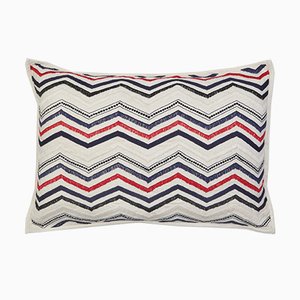
Coussin Tate C par Jackie Villevoye pour Jupe by Jackie
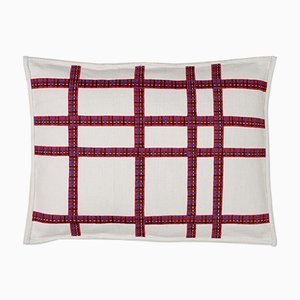
Couverture Lismore par Jackie Villevoye pour Jupe by Jackie
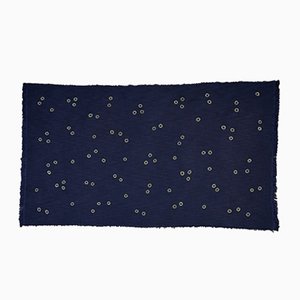
Couverture Lalique par Jackie Villevoye pour Jupe by Jackie

Couverture Kambal par Jackie Villevoye pour Jupe by Jackie
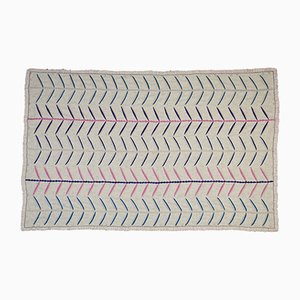
Couverture Denon par Jackie Villevoye pour Jupe by Jackie
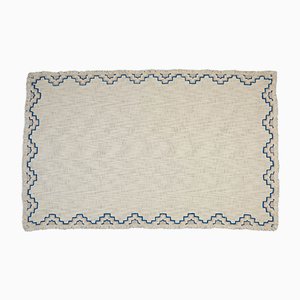
Abat-jour Sputnik #10 Mono Mustard par Julie Lansom

Abat-jour Sputnik #9 Rose et Jaune par Julie Lansom

Abat-jour Sputnik #9 Bleu et Blanc par Julie Lansom

Abat-jour Sputnik #12 Vert et Or par Julie Lansom

Abat-jour Sputnik #10 Mono Pink par Julie Lansom
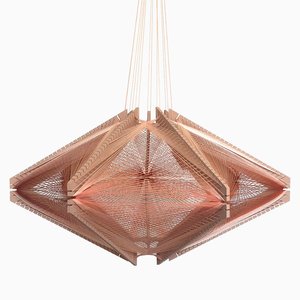
Suspension Murale Leno Tissée à la Main de Weavesmith, 2015
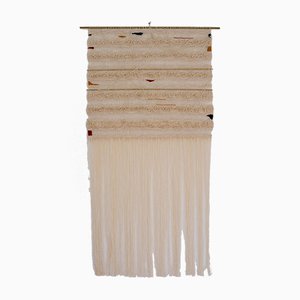
Suspension Murale Shard Tissée à la Main de Weavesmith, 2017
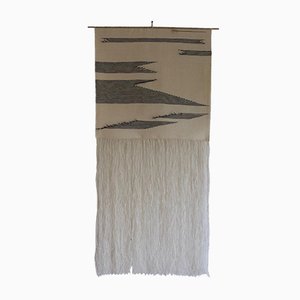
Boldino I Coussin par Jackie Villevoye pour Jupe by Jackie

















 Ana Kraš's studio
© Giada Paoloni for L'AB/Pamono
Ana Kraš's studio
© Giada Paoloni for L'AB/Pamono
 Hug Chairs
© Ana Kraš
Hug Chairs
© Ana Kraš

